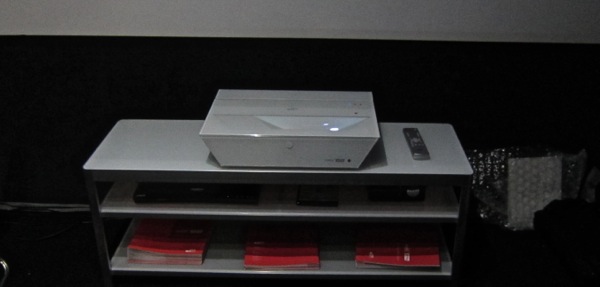SIM2 Projector Advances 4K “Wobulation”

While several companies are working on projectors using this new chip, the first one we’ve seen is SIM2’s Nero4. A prototype was demonstrated at the show (it wasn’t possible to get a good photo of it, thus the photo here of the product brochure). It’s claimed to produce up to 5000 ANSI Lumens with HDR capability, incorporates an all new, all glass lens, and is made in Italy. Availability will be in November at $30,000.
Demonstrated on a 135-inch 2.35:1 screen, the image was superb, a definite competitor to the high-end true 4K LCOS and SXRD projectors from JVC and Sony respectively. But it can be switched off. The main difference in the SIM2 is that it uses a projection lamp in contrast to the laser illumination of the other two.
My only reservation I had about SIM2’s demo, which used HDR scenes from The Martian, was that SIM2 had the Nero4’s motion smoothing feature engaged. While this offered a smooth, crisp, judder-free image, it also produced the film-as-video “soap opera” look that many videophiles strongly dislike. But it can be switched off.

SIM2 also showed its SIM2XTV short-throw projector (above), available at $15,000. Extremely short throw projectors (which can be positioned directly below the screen) are becoming more numerous though they remain pricey. I have yet to see one (including the SIM2XTV) that can equal the performance of similarly-priced, conventional projectors, but they’re improving and offer the projection experience for users who simply can’t accommodate a traditional setup.
- Log in or register to post comments




















































